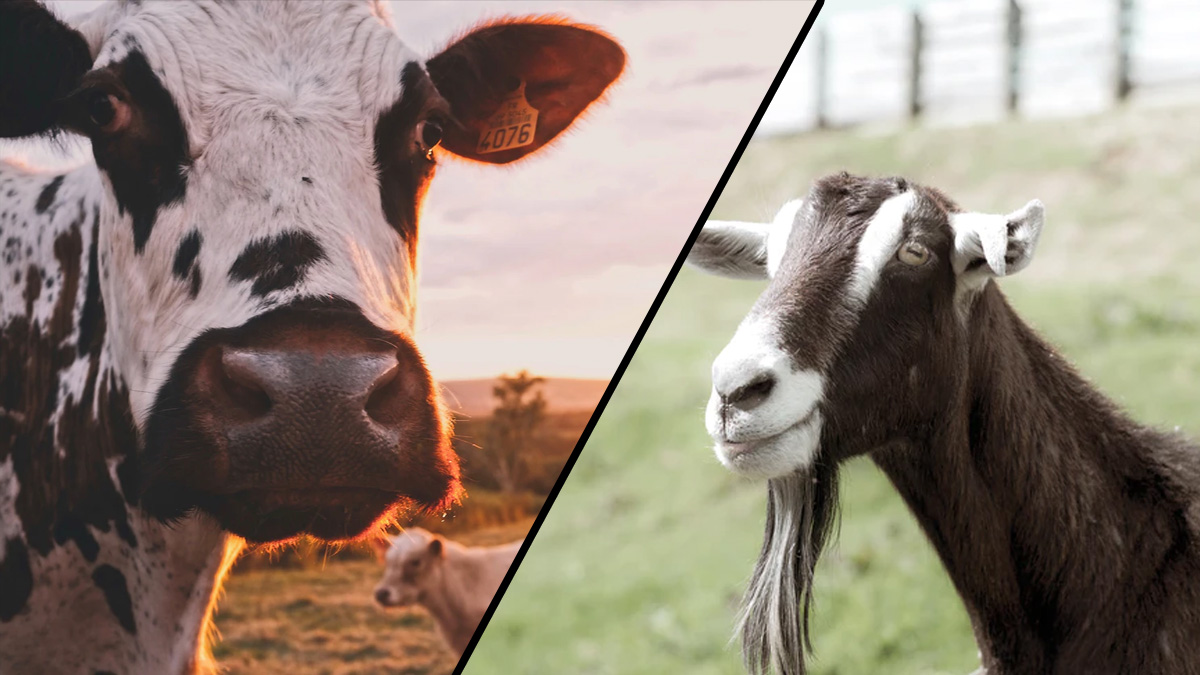on
You have chickens and/or ducks providing you with nuggets of protein and now you have decided to step up your game and start producing your own dairy products. You may have tried goats milk from the store (yuck!) and are used to drinking pasteurized, homogenized cows milk from the store. So you think cows are the way to go – but not so fast.
In the interest of full disclosure – I think cows, especially Jersey’s are beautiful. Their soulful eyes framed by long lashes, their silly tongue antics… I can’t help it I love cows. I have worked on a commercial dairy, and have owned my own cows, but now I raise goats – Nigerian Dwarf dairy goats to be exact. Goats have their own charm when it comes to personality, but we are going to try and take a practical look at the pros and cons of each.
Intial purchase costs
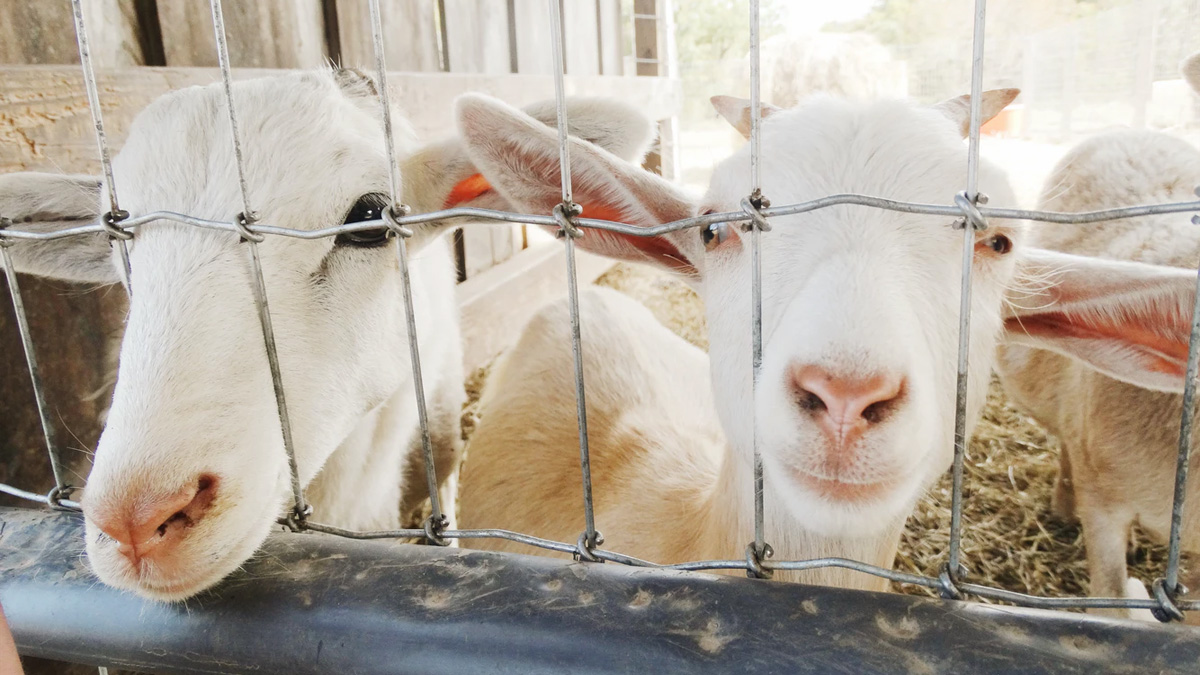
Regardless of goat breed, unless you are buying a pedigreed show goat, you will find that you can buy 2-3 goats for the price of a single heifer. Goats are herd animals and prefer at least one other goat for companionship with three or more being better. But do not make the mistake of putting a buck in with a doe and thinking everything will be fine – he will drive her nuts and she will probably end up kidding when you don’t want her to. Get a doe and another doe as a companion and a buck should have another buck or a wether (neutered male) as a companion and be kept in separate quarters.
Cows prefer to be with another cow, but can be kept by themselves, although loneliness can make them more prone to finding a way out of their pen. Some people will grow out a beef steer with their dairy cow and butcher him just after she calves so that she always has a companion.
Bottom line: Purchasing costs for goats are much lower than cows
Housing and fencing costs
Depending on your breed of goat and your climate you can get by with an oversized dog house or two as long as you have somewhere out of the rain to milk. Goats require at least field fending with 2″x4″ no-climb horse fence being the gold standard. Indoor space should be calculated at least 16sq ft per goat.
Cows, on the other hand, depending on your climate, may not even need housing. Although having at least a run-in shelter where you can feed them out of the rain is a good idea. And of course, you want to be able to milk them without being exposed to the elements. Cows fencing requirements are much simpler than goats – an good electric fence or even a 3 strand barbed wire fence will keep them in most of the time.
Bottom line: Housing and fencing costs are generally lower for cows.
Ease of handling
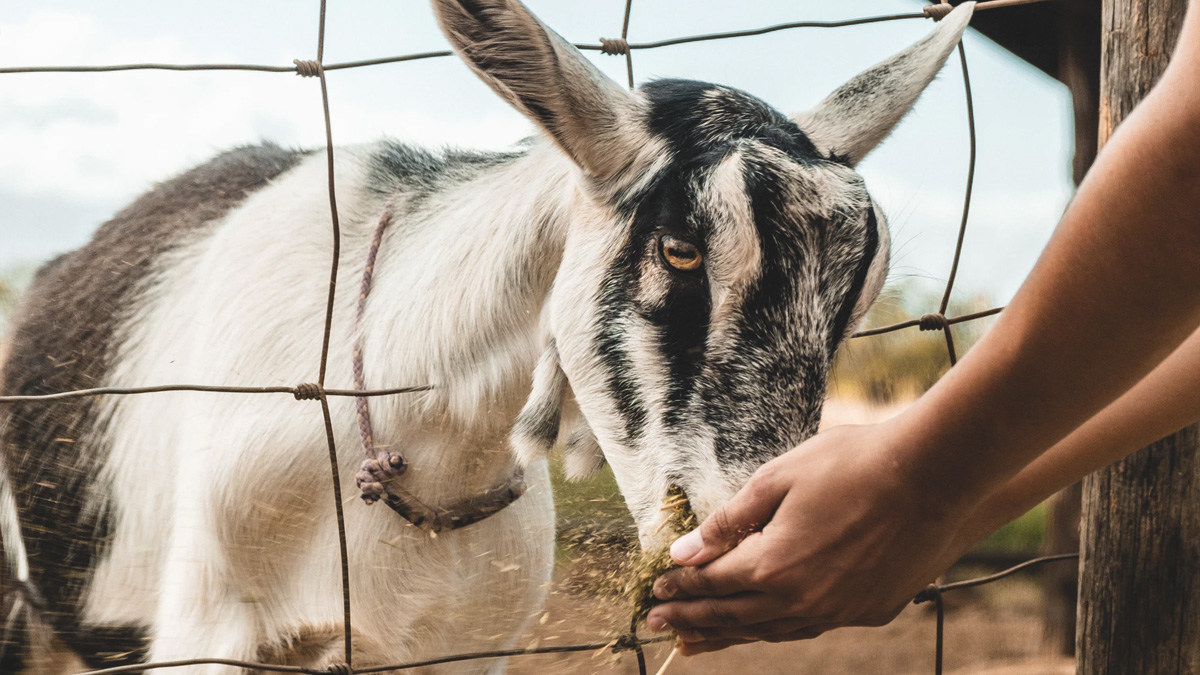
Goats are easier to handle simply because they are smaller than cows. If you did not grow up on a farm, where you got used to handling cattle, goats will be less intimidating. We bought Irish dexter cows because they are the smallest breed, but I quickly learned that it didn’t really matter whether a cow weighed 700 pounds or 1500 pounds, if you had a disagreement, the cow was going to win. Not that they can’t be tamed, my two Dexters had not been handled by humans until we purchased them, but patience and apple slices did the trick and I was able to train them to a raised milking platform. But it wasn’t without a lot of bumps and bruises – and I had previous experience with Holsteins that are almost twice the size. But it was definitely not a job for a novice.
It can be almost impossible to find a trained milk cow to purchase, but training a goat is not as difficult or as potentially dangerous for the novice as training a cow that has never been milked.
Cows can also require some pretty heavy-duty equipment to handle them for hoof trimming, AI or other medical equipment. I didn’t have that equipment and I was lucky that my guy doing AI was ok with my set up as he could have just turned me down flat. As it was only one heifer was cooperative and I never did get the other one bred before selling them.
Bottom line: Goats are easier to handle and don’t require a squeeze chute to safely handle or AI them. Although for the bigger breeds a squeeze chute certainly makes things easier.
Transportation Costs
Nigerian Dwarf goats, which are the smallest breed of dairy goats, can be transported in large or extra large dog kennels. And you can usually transport two kids in that space. Larger breeds can be transported in kennels when they are kids, but will need to be transported in something larger as adults. Goat owners get creative and have been known to haul goats uncrated in the back of a van or SUV with a wire panel to keep them out of a driver’s compartment. But more common is a tall pick-up canopy, a livestock hauler designed for a pick-up bed, or a livestock box or tote. It all depends on the size of your pick-up, the size of your goats and your climate.
If you have some welding skills you could make your own pick-up livestock hauler like the one pictured here. You will either want to have a way to tarp it, or have a solid roof to protect your goats or calf from the elements.

A newborn calf depending on the breed weighs anywhere from 75-125lbs. So for a few weeks, they can utilize the same transportation as a large goat, but it isn’t long before you need a horse or stock trailer to haul them.
Being able to easily and quickly transport your livestock is important in evacuation situations, and it can save on vet bills if you can take them into the vet. If a goat is down, even a large breed, you can conceivably lay them on the back seat of your car and head for the vet. That isn’t possible with anything but a calf.
Bottom line: transporting goats is typically easier and less expensive.
Breeding – you won’t get milk without it
I’ve touched on this briefly already, with cows it is typical to AI as finding a bull to bred to your cow can be difficult, and keeping a bull can be quite dangerous.
You can learn to do your own artificial insemination (AI) for either goats or cows, and purchase your own liquid nitrogen tank to store the straws of semen you have purchased. Or you can hire a professional, just understand that heifer that appears to be in a standing heat – may be out of heat by the time they are able to get to your place.
AI is not a cheaper or necessarily easier option to live cover, but it is a whole lot safe when it comes to dealing with bulls. And it can give you breeding options you could not otherwise afford. This is true for both cows and goats.
For goats, the biggest drawback is the smell during rut. With the exception of Nigerian Dwarfs who can come into heat year-round, the rest will usually have strong heats only for a few weeks in the fall. The bucks respond by making themselves smell “purty for the ladies” and they accomplish this by peeing on their beards and front legs. Yes, you read that right. It is disgusting and it does stink. In my opinion, is the biggest drawback to having goats – however the good news is this stench is only around for a few months.
Just like does, a buck needs a companion, either another buck or a wether. Do not keep a buck in with your does, it leaves your does smelly, and young bucks, in particular, will not leave them alone, even when they are not in heat. So however many bucks you have – keep them in their own pasture and housing.
Bottom line: bucks may stink for a few months, but they aren’t likely to kill you.
Cows milk vs. goats milk
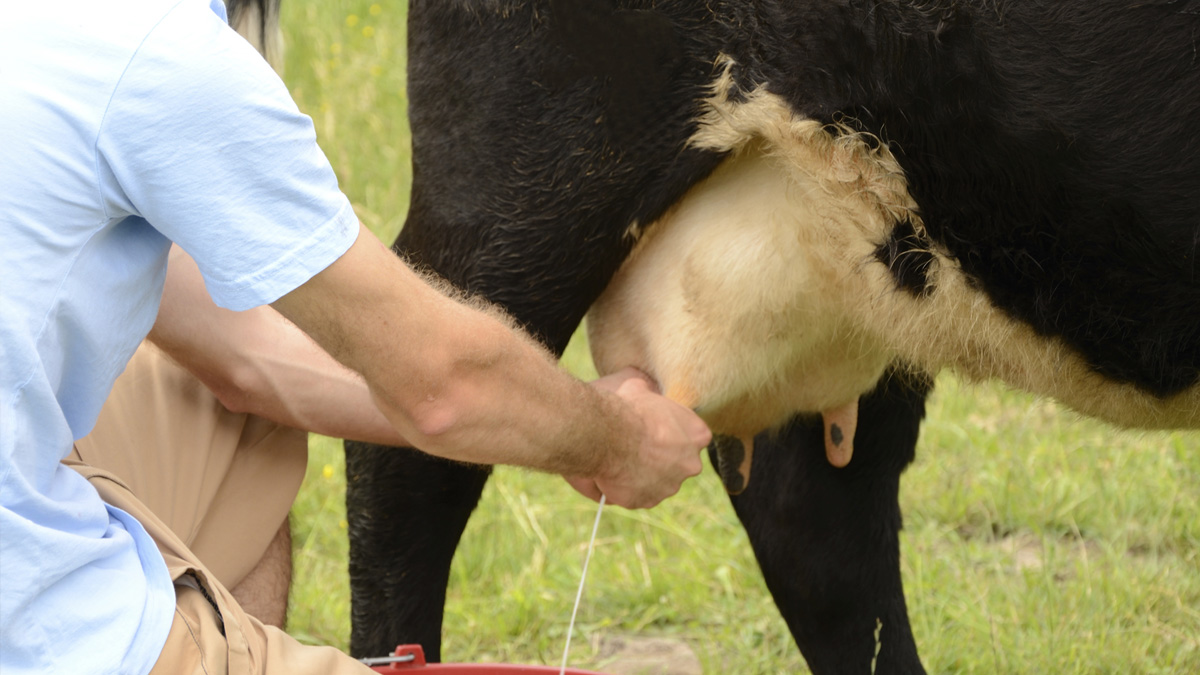
Some breeds of heritage cattle, such as Dexters or Milking Devons produce a gallon or two a day, which is comparable to the best milk goat breeds like Saanens and Alpines. There can be a wide variation in production between animals of any breed though. If you want to milk your cow or goat, it’s a good idea to buy from someone who is milking and can tell you how much milk the animal or its dam produces.
I raise Nigerian Dwarf goats – they stand less than 2 ft tall and give anywhere from a quart to a half-gallon or more a day. That doesn’t seem like a lot until you have 2 or more does give you that amount a day and you suddenly realize you are out of space in your fridge. Even if making cheese or butter, it doesn’t take long to feel like you are swimming in milk. If you are getting a gallon a day from your herd – that is 7 gallons a week! Do you really buy that much milk every week from the store?
Goats milk does not separate as easily as cows milk, so while you can skim cream off of cows milk after just a few hours, it takes a few days for goats milk to separate and for the cream to rise. Of course you can get a powered or hand cranked cream separator if you feel you don’t want to wait for the cream to rise. And you do need cream to make butter. Although there have been a few of my does that towards the end of their lactation produced such high butter fat that all we needed to do to make butter was to shake room temperature milk in a jar for about 20 minutes.
Bottom line: Goats milk can be easier to digest than cows milk for some people and it is slightly healthier.
Hand milking a cow vs a goat
This really depends on the size of your goat or of your cow. When I had Dexters I had to build a raised platform so that I felt I had enough room to get under them to milk.
Cows can be absolute pills about being milked. They can and will kick you, and they are deadly accurate with their tails. And trust me the only thing worse than the sting of a tail across your face, is the sting of a tail covered in cow patty across your face! Cows are typically milked from the side, and often with your head leaning into their flank. You can reach across and get one side and then the other, or you can milk one side and then move around to milk the other.
Milking a cow or a goat requires a lot of strength in your hands and forearms. You are not going to be able to milk out a cow that is giving more than a couple of gallons without a lot of practice building up to it. And even milking out one of the larger goats such as a Saanen or a Nubian is going to take some building up to.
Goats generally have better manners while being milked. Some will kick or sit on the bucket, but their tails are too short to swat you, and they rarely if ever poop or pee on the milk stanchion.
While you could milk them from the ground, they are usually milked on a raised stanchion either with the milker sitting on a stool or overturned bucket to the side of the goat facing towards the udder or from the rear and sitting on the stanchion behind the goat. Some people when milking from the rear site side ways and twist, but I prefer to straddle the milk stanchion so that I can keep my spine straight.
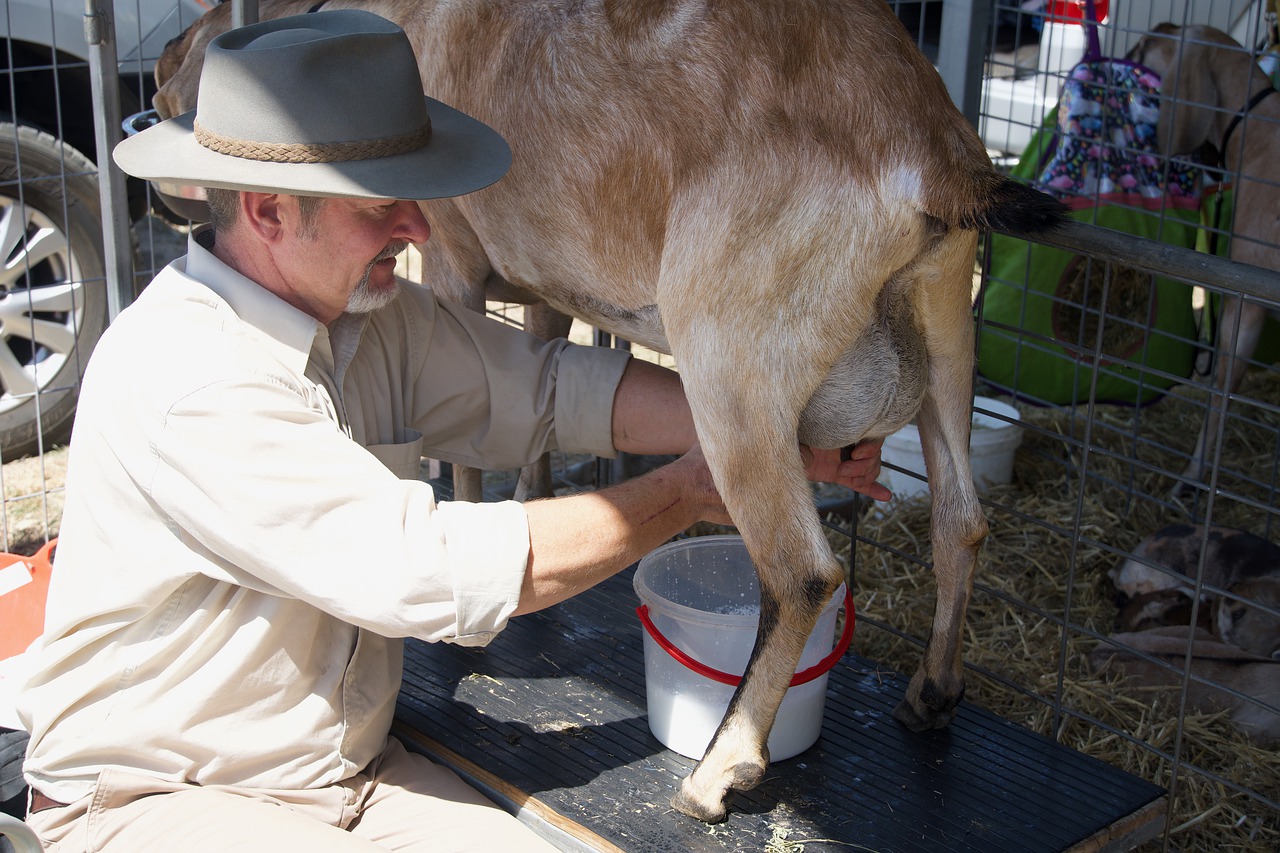
Get access to premium content and more!



